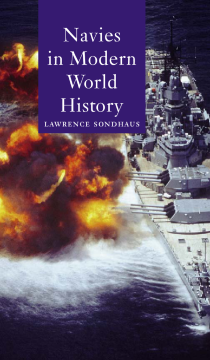
Additional Information
Book Details
Abstract
Navies in Modern World History traces the role of navies in history from the early nineteenth century, through both World Wars, to the dawn of the twenty-first century and beyond.
In a series of case studies Lawrence Sondhaus examines the national fleets of Britain, France, Germany, the United States, Japan, Brazil, Chile and the Soviet Union, and demonstrates the variety of ways in which each country has made decisive use of naval power. In each case the author argues that the navy in question helped change the course of modern world history; he also systematically analyses the challenges navies faced in assembling matériel, training personnel and performing their mission.
This book discusses the leading role of navies and shipbuilders in key technological innovations of the nineteenth and early twentieth centuries, including advances in steam power, armor, artillery and torpedoes, and looks at aircraft carrier design and naval aviation in general in the second half of the twentieth century. It also explains how, today, technological breakthroughs are centered around naval stealth and maritime propulsion systems. Special attention is devoted to the evolving state of naval technology, and the book shows how the relative industrial capabilities of seafaring countries have been reflected in their maritime building programs, providing an important link between the evolution of modern national fleets and the broader history of the period.
"Provides a complete introduction, overview, and analysis of naval history since 1815 . . . The stories are of peace as much as of war. The footnotes and bibliography provide a guide to both past classics and current scholarship."
— R. Higham, Choice
"Contains fascinating insights not easily available elsewhere."
— The Naval Review
"Offers a solid introduction to the navies under consideration, demonstrating the complex forces that guided their development, the range of activities they engaged in, and their ability to shape the fate of nations and empires. . . . also provides a good overview of broad trends in naval technology, personnel and combat in the modern era. . . . the author's unconventional approach ultimately succeeds because of the high quality of the individual case studies."
— Military HistoryLawrence Sondhaus is associate professor in the department of history and political science at the University of Indianapolis. He is the author of Naval Warfare, 1815–1914 (2000); Franz Conrad von Hötzendorf: Architect of the Apocalypse (2000); Preparing for Weltpolitik: German Sea Power before the Tirpitz Era (1997); and two volumes on the Austrian navy.
